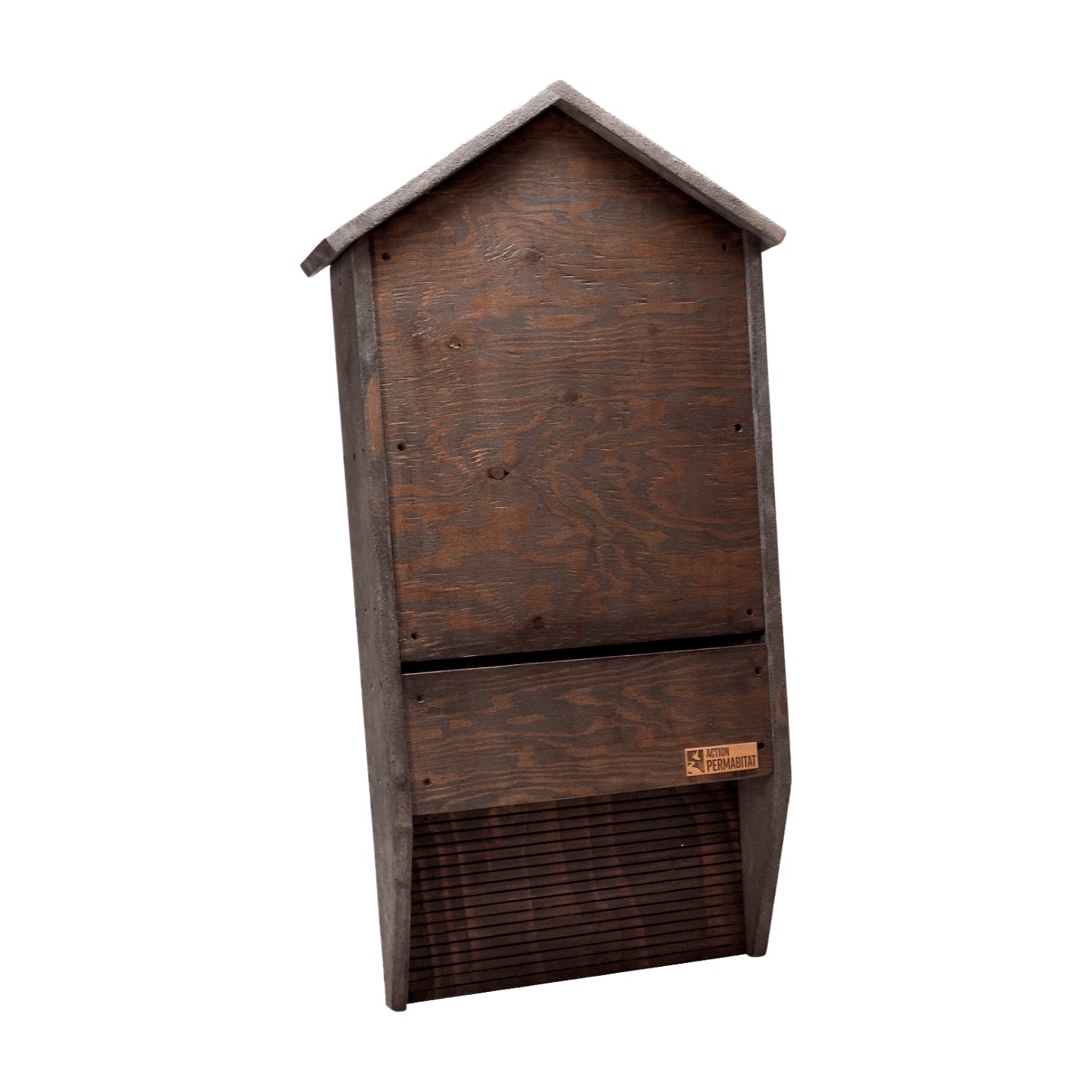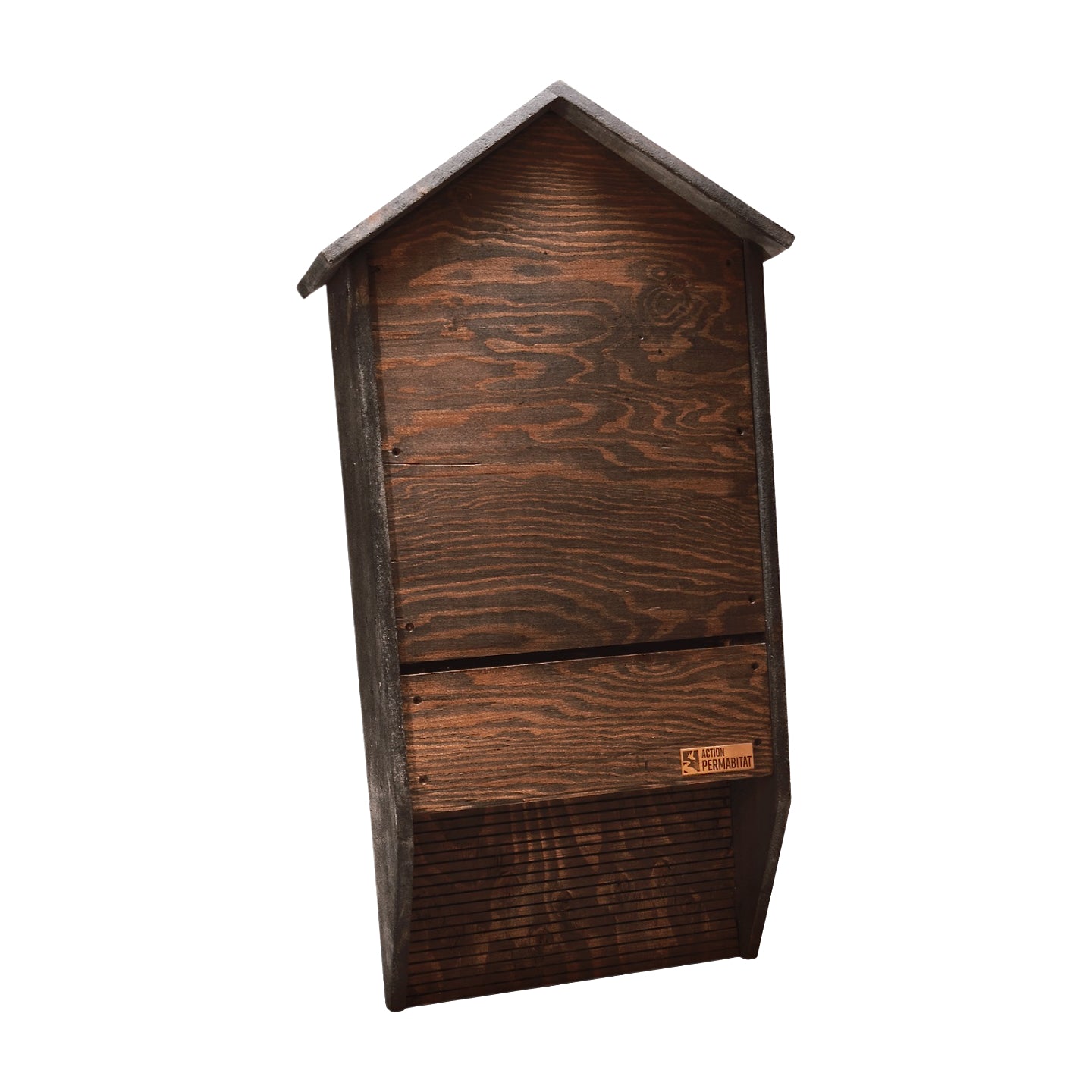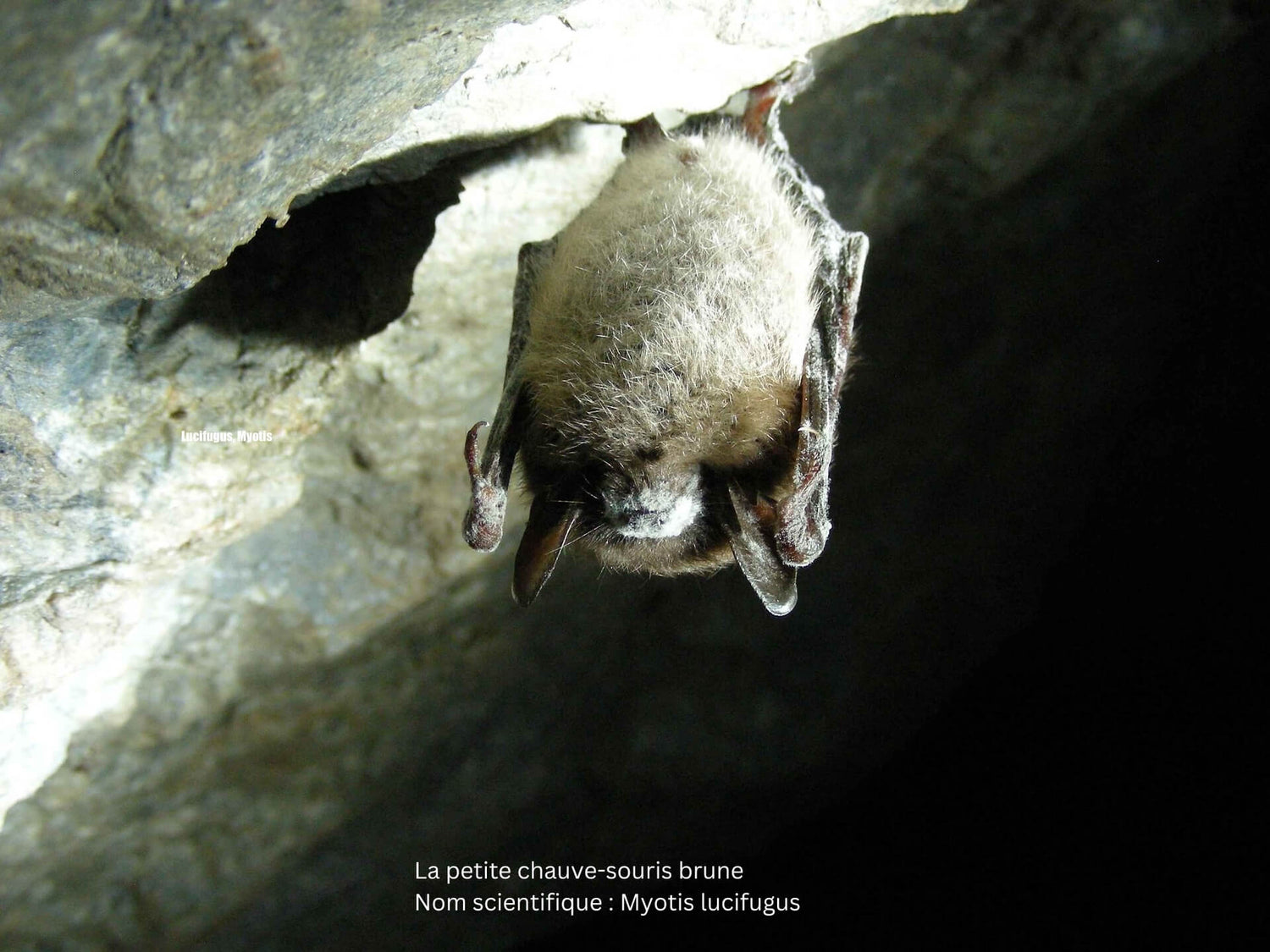Pointed Roof Certified Bat House
Pointed Roof Certified Bat House
Couldn't load pickup availability
DESCRIPTION
By promoting effective insect control, our bat houses play a crucial role in supporting local bat populations, an essential link to the health of ecosystems.
Certification by the Canadian Wildlife Federation
Our bat house model with three compartments, measuring 34 inches tall, has been examined and certified as ideal by members of the Canadian Wildlife Federation (CWF).
This house meets their latest design recommendations and constitutes an optimal habitat for bats.
Model Options
• Four-Chamber - 28" High, Width of 18.5 Inches - CWF-CERTIFIED
• Four-Chamber - 34" High, Width of 18.5 Inches - CWF-CERTIFIED IDEAL
Features
• Capacity: Our bat house can support a colony of 200 bats.
• Heat Absorption: It has excellent heat absorption capacity and offers protection against moisture.
• Air Circulation: Its design allows for effective air circulation, reducing the risk of overheating, which is essential for the bats' health and behaviour.
• Temperature Regulation: In case of intense heat or cold, bats can move inside the house, allowing them to regulate their body temperature and avoid thermal stress.
• In Case of Eviction: Our houses are effective in ensuring a transition when bats need to be evicted from their current habitat, reducing stress and increasing the chances of successful exclusion.
• Integration: They integrate perfectly into natural and urban landscapes, encouraging bats to stay in the area without invading buildings, thus reducing conflicts with humans.
• Bat Preference: According to the CWF, larger houses with at least three compartments generally have the most success.
Conservation Support
By purchasing from a specialized seller, you often support local conservation and research initiatives, contributing to ecosystem protection.
INFORMATION
Bats, commonly belong to the order Chiroptera. They account for over 1,500 species worldwide, making them the second most diverse order of mammals after rodents.
Interesting Points:
• Pest Control: North American bats are valuable allies in the fight against harmful insects. By consuming millions of insects every night, they play a crucial role in controlling insect populations and reducing our dependence on pesticides.
• Ecological Role: By controlling insect populations and pollinating plants, bats are essential for maintaining ecosystem balance and supporting agriculture by reducing agricultural and forest pests. Additionally, their droppings, commonly called "guano," are an excellent natural fertilizer.
• Echolocation: Bats are much more effective than birds at eliminating insects. While many insects can hide from birds in the evening darkness, they cannot hide from bats because they use echolocation to easily track their prey. They emit high-frequency sound waves that bounce off objects, allowing them to "see" with their ears. So, if you have a strong bat colony on your property, you should expect a significant reduction in the number of insects in your area, while respecting a biological and healthy control of our insect populations.
Endangered Bats
In Canada, three bat species are listed as endangered due to white-nose syndrome (WNS), a fungal disease that severely affects these species.
Here are the species concerned:
1 Northern Long-eared Bat (Myotis septentrionalis)
2 Little Brown Bat (Myotis lucifugus)
3 Eastern Small-footed Bat (Perimyotis subflavus)
These species are primarily found in the eastern part of the country and their survival is threatened by this contagious and deadly disease. In addition to this devastating disease, bats face habitat loss, light pollution, climate change, wind turbine hazards, and pesticide use. These combined threats endanger their populations, requiring urgent conservation efforts to protect them.
Let's Protect Bats
One way to help them is to provide safe shelters, like specialized bat houses, where they can rest and reproduce safely.
When to Expect Occupants
The success of a bat house depends on several factors. In high-demand areas, even poorly designed bat houses can attract occupants within days. On average, it takes between 2 to 6 months for bats to discover a house and start using it. However, in areas where bat houses have not been used before, it can take between 12 to 18 months. Patience and perseverance are therefore essential to successfully attract these small mammals. A good location, quality construction, and suitable conditions will increase the chances of success. Areas where bats have previously used houses tend to see faster success.
Environmental Health Indicators
Bats are valuable allies in our quest for a balanced ecosystem. By protecting them, providing shelters, and valuing these incredible mammals, we not only improve our environment but also ensure a healthier and more balanced future for all species, including our own.
Together, let's mobilize to ensure the future of these precious protectors of our planet's ecosystems.




Chauves-souris menacées
Au Canada, trois espèces de chauves-souris sont inscrites sur la liste des espèces en voie de disparition en raison du syndrome du museau blanc (SMB), une maladie fongique qui affecte gravement ces espèces.
Voici les espèces concernées :
1 - Chauve-souris nordique (Myotis septentrionalis)
2 - Petite chauve-souris brune (Myotis lucifugus)
3 - Pipistrelle de l'Est (Perimyotis subflavus)
Ces espèces sont principalement trouvées dans l'est du pays et leur survie est menacée par cette maladie contagieuse et mortelle.
En plus de cette maladie dévastatrice, les chauves-souris sont confrontées à la perte d’habitats, à la pollution lumineuse, aux variations climatiques, aux dangers des éoliennes et à l'utilisation de pesticides. Ces menaces combinées mettent en péril leurs populations, nécessitant des efforts de conservation urgents pour les protéger.



